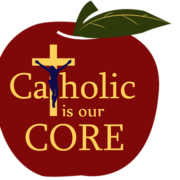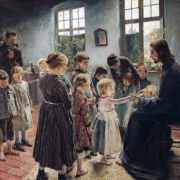Disconnect between Common Core’s Literary Approach and Catholic Education’s Pursuit of Truth
Many of the Common Core State Standards for English Language Arts are, when taken in isolation and at face value, fairly innocuous. Who, after all, could be against a fifth grader being asked to “Compare and contrast two or more characters, settings or events in a story or drama, drawing on specific details in the text (e.g., how characters interact)”? Other Standards are more disconcerting; for a detailed review, see the NAPCIS Annotated Common Core Standards.
But a substantial concern is with the guiding educational philosophies behind the Common Core. These philosophies are present in what the Common Core describes as its “instructional shifts” and are the promise behind the standards:
These Standards are not intended to be new names for old ways of doing business. They are a call to take the next step. It is time for states to work together to build on lessons learned from two decades of standards based reforms. It is time to recognize that standards are not just promises to our children, but promises we intend to keep. (National Governors Association Center for Best Practices & Council of Chief State School Officers, 2010, Intro.)
The Common Core is about new ways of doing business (i.e., new ways of educating). They are a new promise, the next step, in education. As has been argued elsewhere, the Common Core was unveiled nationally even though, as a whole, it was untried and untested. However, far from delivering a new way of doing business, what the Common Core has done is privilege one way of educating. The designing consultants have simply taken one side in ongoing, com- plex, pedagogical issues. The Common Core’s national scope has thereby crowded out other voices and philosophies and hampered intellectual and pedagogical diversity.
In the highly idiosyncratic, dynamic, complex and necessarily personal world of human intellectual formation, there are many paths to excellence. Catholic schools, with their unique focus on integral human formation and the celebration of truth, beauty and goodness, should protect their voice and their viewpoints. Catholic schools should understand and be aware of the Common Core shifts, reject their narrow and utilitarian philosophies, and seek to counter the Common Core’s effects with a distinctly more holistic and complete Catholic educational experience.
This report focuses primarily on the English Language Arts (ELA) standards, as those tend to have a greater immediate effect on Catholic identity. (However, math too is affected, as one side in the ongoing “math wars” has unilaterally claimed power.) The Common Core has taken one side of a complex debate about different literary and interpretive theories and the nature and purpose of literature.
It is possible, of course, that the authors of the ELA standards are not even fully aware of what they have done. The standards’ main architect, David Coleman, is neither a professor of literature nor has he ever taught literature in the K-12 environment. He is an educational consultant who happened to be in the right place at the right time with the right connections with the Bill and Melinda Gates Foundation to take the lead in transforming American literary education. And—like Common Core funder Bill Gates, who never went to college—Coleman seems to have little regard for the transformative or transcendental power of literature. He once advised educators in a Common Core presentation: “[A]s you grow up in this world, you realize people really don’t give a s–t about what you feel or what you think” and, “It is rare in a working environment that someone says, ‘Johnson, I need a market analysis by Friday but before that I need a compelling account of your childhood.’” For Coleman and Gates, reading seems to be about distilling facts, writing is about reports and education is about college and career readiness.
According to this utilitarian approach to education, we need to fix America’s schools to ensure that we are able to produce workers who can compete in the 21st century global economy. In order to ensure our success, the logic goes, we need extensive testing to ensure quality control both in student learning and in teacher efficacy. Enter the computer-based, massive, Common Core testing system being rolled out across the country this spring. Two versions of a new test being used to assess both the students and teachers in their mastery of the Common Core have been unleashed on our schools, teachers and students. Much more, no doubt, will be said on this subject as the scores and uses of the scores become evident.
It is perhaps in the challenge of computerized high-stakes testing that we find one of the reasons for the Common Core’s alignment with one literary theory over all others. The method advanced by the writers of the standards is what they call Close Analytic Reading or Close Reading and is very similar to a literary approach used in the 1940s and 1950s called New Criticism (Brizee & Tompkins, 2011). According to the Partnership for Assessment of Readiness for College and Careers (PARCC), one of the two testing consortia funded by the federal government to assess the standards:
Close, analytic reading stresses engaging with a text of sufficient complexity directly and examining meaning thoroughly and methodically, encouraging students to read and reread deliberately. Directing student attention on the text itself empowers students to understand the central ideas and key supporting details. It also enables students to reflect on the meanings of individual words and sentences; the order in which sentences unfold; and the development of ideas over the course of the text, which ultimately leads students to arrive at an understanding of the text as a whole. (PARCC, 2011, p. 7)
Close Reading/New Criticism allows for easier computer testing. There is the perception that if all we are testing is the text on the page, this will somehow be more objective. Words are what they are. The text in isolation can supposedly be tested in isolation with few variables and thus more accuracy. We can get to a simpler, fill-in-the-bubble “objective” response. This method may also be perceived as fairer to those who may not have robust life experiences to think about the meaning or implications of the text, even if the text comports with reality or truth outside of the text. No opinions need to be considered or evaluated, which computers would have a hard time doing anyway.
So it’s an apparent win/win—the test gets more objective answers, and teaching gets easier since variables are reduced—but in fact the cost is quite high. It is the eviscerating and over- simplification of the literary and reasoning experience. Testing is often about limiting variables; education, on the other hand, is often about multiplying variables, about complexity, depth and richness that a student may very well miss if we are striving to get to the one, right bubbled answer.
The Close Reading/New Criticism approach used by the Common Core not only assists in standardized testing, but it can also be used as a way to make sure that literature serves the pragmatic college and career focus of the Common Core. From this perspective, the value of literature is not so much what it teaches us about how to live well, but that it teaches us how to read well (e.g. Just tell me what’s in the report, Johnson!).
Elements of New Criticism can be used as a means to this end by focusing simply on a systematic analysis of the text, objectifying the relationship between the text and its form, limiting the text to itself, and negating the reader ’s response and/or the author’s intentions (Delahoyde, n.d.; Murfin & Ray, 1998). New Criticism does not invite external socio-political or historical perspectives. As Delahoyde (n.d.) states:
The goal then is not the pursuit of sincerity or authenticity, but subtlety, unity, and integrity—and these are properties of the text, not the author. The work is not the author ’s; it was detached at birth. The author ’s intentions are “neither available nor desirable, [and] …meaning exists on the page, the meaning of the text is intrinsic and should not be confused with the author ’s intentions nor the work’s affective dimensions”. (Delahoyde, n.d., para. 3)
Here we see a limiting of the pursuit of truth by the actual formula used to analyze the text. Not only is the pursuit of truth limited in this approach, but the author ’s actual position is disregarded as well.
While the Close Reading approach advocated by the CCSS authors does rely heavily upon the search for the author ’s explicit and implied themes, many aspects of Close Reading are comparable to the New Criticism approach. For instance, teachers are to give the text to the students with little to no background information and are not to add additional pieces of information to the discussion—something that other reading experts recommend doing (NCTE, 2004; Steven, 1982). The selected text itself sets the parameters of the discussion, and students are to answer questions from evidence within the text.
For example, here’s a Close Reading lesson from the Teaching Channel titled, The Omnivore’s Dilemma: The Secrets Behind What You Eat by Michael Pollan. In the YouTube video (Stabrowski, 2014), the teacher demonstrates how to guide a group of students through a series of questions to see how the author has personified corn as an evil King and how corn has chased poor innocent animals and other crops off of the farm. If the students do not arrive at the conclusion that corn is evil, then the teacher rewinds (meaning re-teaches) that portion of the lesson so that the students all understand this fact. Students read the text once to get the gist of the text. Then the teacher, or a good reader, reads the text aloud while the students listen and think about the text-dependent (pre-made) questions they are given to answer. When discussing the questions and answers, students are not to go outside of the text to research whether corn has any nutritional benefits or how it is exported to feed other countries. They are not to bring up any personal thoughts about corn, only evidence from the text. They are then instructed to correct or add to their answers, so that they are in conformity with the class discussion. Here we have a very concerted effort, and an entire class period, directed to making sure students have an exact understanding of the author ’s intentions, both explicit (with evidence from the text) and implied. It is pretty hard for an elementary or middle school student to disagree, after this much effort has been put into understanding the author ’s viewpoint.
Pearson (2013), a member of the Common Core Validation Committee and proponent of the standards, has stated that Close Reading seems to squelch the activation of students’ prior knowledge (since all knowledge is remanded to the text), and the freedom to evaluate and compare is based upon this prohibited “outside” knowledge. While he is concerned about the fact that cognitive learning theory is being neglected by this approach, he raises a more important issue: the suppression of freedom among the students and teachers to include other perspectives and considerations in addition to those advocated by the text and the author. Pearson explains this as the authors’ misunderstanding about the process of comprehension and the fact that prior knowledge cannot be turned off or on at will. Pearson wonders if once a student learns about the authors’ points, can the student then use that information in the next selected reading of the author—extending the first selected text into the second, into the entire chapter, into the book—or must the reader be remanded to the selected piece in front of them?
In college and university literature departments around the country, discussions about the validity and applicability of various literary approaches in the pursuit of meaning are ongoing. But for the teachers and students in American schools, the discussion has ended: Close Reading is it.
Our goal in teaching literature to kids is not just to prepare them for possible graduate school in English; our goal, especially in Catholic schools, is to form them and expose them to great, engaging, formative and normative literature and in the process instill in them a love and passion for reading great literature. (See The Story Killers by Terrance Moore (2013) for an extended discussion of this point.) Important to K-12 students is reading and engaging in well-crafted stories that will assist them in becoming wiser and better people, leading to more satisfying and richer lives. For our children, stories are not just about texts and techniques, but also about people and relationships. Stories are not just about literary styles and interpretive complexities, but also about exploration into the imaginative and powerful terms surrounding the nature of reality, morality, faith and virtue. Great literature presents images of nobility and excellence—and their opposites—for our judgment and self-judgment, as we engage in deep and meaningful discussions about what it means to be a fully actualized, good human being. The textual technicalities and techniques, which are more easily tested and discussed using New Criticism and Close Reading, are means rather than ends in the K-12 literary experience—and this is most especially true for Catholic schools.
In Catholic schools, knowledge is attained when the human intellect, informed by the senses, judges things rightly. Confining students to their own background knowledge or the point of view of the text rewards subjectivity and relativity, instead of Truth. Concluding a lesson without having the opportunity to discuss other viewpoints that might in fact contain Truth, allows doubt, misinformation and even fallacy to solidify in the student’s mind. In catechesis, this would be like leaving students adrift after speaking about Creation and the Fall, putting off until later the promise of the Resurrection. If these texts are so important to be analyzed in the light of close reading, then they are important enough to be read in the light of all of the viewpoints and perspectives that surround them. As Fr. Robert Spitzer (2011) notes in a discussion of the pursuit of truth, there are far more errors of omission than commission, which means that leaving out data is just as harmful to the pursuit of truth as getting the wrong data or making logical errors.
Catholic educators, especially if they are using Common Core-developed texts and questions, need to look carefully at what texts and what questions are being left out. Their focus needs to be on the pursuit of the true, good and beautiful, not on getting the right answer on the Common Core test-inspired questions at the end of any publisher ’s provided worksheets. Catholic educators need to look deliberately and carefully at the real, rich and wonderful world outside the text. For the text, in combination with reality, may prove a mighty formative weapon. The text, in context, may very well brilliantly unveil reality—sometimes with life-changing effect. The purpose of reading is more than downloading text-limited knowledge. In addition, reading can sometimes simply be for pleasure, joy and wonder. There is life outside of the Common Core and its tests.
Teachers in Catholic schools must move well beyond the Common Core in their much more profound efforts toward the integral formation of their students in mind, body and spirit. They do this through their intellectual and moral example, living the truth with love, and exposing their students to complex reality in all of its glorious manifestations. In the Vatican’s document The Catholic School (1977), we read:
The school considers human knowledge as a truth to be discovered. In the measure in which subjects are taught by someone who knowingly and without restraint seeks the truth they are to that extent Christian. Discovery and awareness of truth leads man to the discovery of Truth itself. (para. 41)
It also leads students to a discovery of Truth, Himself. The purpose of our Catholic educational institutions, according to Pope Benedict (2008), is to first and foremost be a place where students can encounter the living God. Pope Benedict (2010) also reminds us that the purpose of our Catholic schools is to make saints!
Overuse of the methodology of Close Reading and a reconstituted literary approach of New Criticism is insufficient in the much broader and more complex pursuit of truth in which we are called to engage in our Catholic schools. There are other analytical tools and approaches in the field of literature that are also helpful to address the richness and power of literary possi- bility, creativity and passion. Among these are Reader/Response, Moral Criticism, and Struc- turalism (Brizee & Tompkins, 2011). Catholic students need rich exposure to Moral Criticism, which is more open to an analysis of the text’s teachings related to topics of wisdom, grace, beauty and virtue. (See http://www.westga.edu/~jmcclain/Literary%20Theory/moralintellectual_critical_appr.htm for more on Moral Criticism.) This broader interpretive framework will better enable Catholic schools to avoid unnecessarily or unwittingly narrowing their efforts.
Former Secretary for the Congregation for Catholic Education, Archbishop Michael Miller, C.S.B., describes this dynamic when he warns:
All too many Catholic schools fall into the trap of a secular academic success culture, putting their Christological focus and its accompanying understanding of the human person in second place. Christ is “fitted in” rather than being the school’s vital principle (2006, p. 26).
He goes on to say, “This conviction about the nature of truth is too important for Catholics to be confused about,” (p. 46) and “Unlike skeptics and relativists, Catholic educators share a specific belief about truth: that, to a limited but real extent, it can be attained and communicated to others.” He warns that:
Catholic schools (should) take up the daunting task of freeing boys and girls from the insidious consequences of what Pope Benedict XVI has called the “dictatorship of relativism”—a dictatorship that cripples all genuine education. Catholic teachers are to cultivate in themselves and develop in others a passion for truth that defeats moral and cultural relativism. They are to educate “in the truth.” (p. 46)
Our standards, Catholic school standards, are not synonymous with the Common Core State Standards. As the United States Conference of Catholic Bishops (USCCB) has pointed out, the Common Core Standards are in and of themselves insufficient to guide Catholic educational efforts (USCCB, 2014). Solomon (2003) states that standards represent a culture’s explicit statements that it “finds worthy of transmission” (p. 3). Our culture, as enshrined in the ubiquitous Common Core and its oppressive testing regimen, values a utilitarian approach to education that only half-prepares our students for life beyond high school graduation. According to Archbishop Miller, “If a Catholic school is to deliver on its promise to provide students with an integral education, it must foster love for wisdom and truth, and must integrate faith, culture, and life” (p.45) by using instructional approaches that focus on much more than evidence from the text and whose horizon includes more than college and career.
There is much more to say regarding weaknesses in the Common Core ELA standards, especially another of the ELA shifts – graduated percentages of informational text. The Common Core designers have errantly, without clear data or clear direction, mandated an increase in informational texts in all levels or all schools. This, by necessity, means a decrease in great literature. More on this travesty will be forthcoming from The Cardinal Newman Society.
The Common Core’s dismissive attitude toward the transcendent power of literature is hopefully exposed not just by these articles but in reflecting again on Common Core architect David Coleman’s remarks, “[A]s you grow up in this world you realize people really don’t give a s–t about what you feel or what you think,” and “It is rare in a working environment that someone says, ‘Johnson, I need a market analysis by Friday but before that I need a compelling account of your childhood.’” We can see how Catholic schools must completely reject these notions and their enshrinement in the Common Core. We believe we are about authentic human excellence and human flourishing. We will, by happy circumstance, produce better workers and better scholars because we will produce better, more integrally developed, human persons.
Johnson may have a job, but will he have a life? Johnson’s boss may not care about what Johnson feels or thinks: but his wife will, and his children will, and his friends will, and his neighbors will, and if he is a teacher, his students will, and if he is a politician, his constituents will. And even his cynical boss may not care what Johnson thinks or feels, but his boss will care that Johnson thinks or feels. Johnson will not only be a stunted human being having learned under the Common Core, but he will also be a poorer employee.
Even public schools exist to produce thoughtful, productive and independent citizens in a democratic republic, not just workers and college students. A strong democracy requires strong people, not just strong workers. We need students to be more humanized in order to address the crisis and challenge of today’s world, not less. This is not a time to set our sights on the “common” or the cultural status quo. This is a time requiring vision and excellence.
In Catholic schools, we know we are not just producing workers and scholars, we are producing living, breathing, complex, contradictory, eternally destined, unrepeatable and immensely valuable human beings. Our bishops and parishes do not support schools and keep them open to provide better “career and college readiness”. They keep Catholic schools open to provide the liberation that comes from a thoughtful, loving and free encounter with the living God. Catholic schools exist not for their pragmatic worldly usefulness, but rather to actuate the authentic freedom to which each person is called and to provide skills at apprehending and integrating reality, including that which transcends the text, in all of its fullness and glory.
References
Coleman, D., & Pimentel, S. (2012). Revised publishers’ criteria for the Common Core State Standards in English language arts and literacy, Grades 3–12. Retrieved from http://www. corestandards.org/assets/Publishers_Criteria_for_3-12.pdf.
Benedict XVI, Pope Emeritus. (2008). Meeting with Catholic Educators: Address of His Holi- ness Benedict XVI. Retrieved from http://w2.vatican.va/content/benedict-xvi/en/speech- es/2008/april/documents/hf_ben-xvi_spe_20080417_cath-univ-washington.html.
Benedict XVI, Pope Emeritus. (2010). Address of the Holy Father to pupils of St. Mary’s Univer- sity College. Retrieved from http://w2.vatican.va/content/benedict-xvi/en/speeches/2010/ september/documents/hf_ben-xvi_spe_20100917_mondo-educ.html.
Benedict, Pope Emeritus. (2014). Benedict XVI: Truth is not given up in the name of a desire for peace. Retrieved from http://www.zenit.org/en/article/benedict-xvi-truth-is-not-given-up- in-the-name-of-a-desire-for-peace.
Brizee, A., & Tompkins, C. (2011). Form follows function: Russian formalism, new criticism, neo- Aristotelianism. Retrieved from https://owl.english.purdue.edu/owl/resource/722/03/.
Delahoyde, M. (n.d.). Introduction to literature: New criticism. Retrieved from http://public. wsu.edu/~delahoyd/new.crit.html.
Miller, Michael. (2006). The Holy See’s teaching on Catholic education. Atlanta, GA: Solidarity Association.
Murfin, R., & Ray, S. (1998). The Bedford glossary of critical and literary terms. Retrieved from http://bcs.bedfordstmartins.com/virtualit/poetry/critical_define/crit_newcrit.html.
National Council of Teachers of English. (2004). On reading, learning to read, and effective reading instruction: An overview of what we know and how we know it. Retrieved from http://www.ncte.org/about/over/positions/category/read/118620.htm.
Partnership for Assessment of Readiness for College and Careers. (2011). PARCC model con- tent frameworks: English language arts/literacy grades 3-11. Retrieved from www.parccon- line.org/sites/parcc/files/PARCCMCFELALiteracyAugust2012_FINAL.pdf.
Pearson, P. (2013). Research foundations for the Common Core State Standards in English lan- guage arts. In S. Neuman and L. Gambrell (Eds.), Reading instruction in the age of Common Core State Standards. Newark, DE: International Reading Association. Retrieved from http:// www.scienceandliteracy.org/research/pdavidpearson.
Sacred Congregation for Catholic Education. (1977). The Catholic school. Rome, Italy: Sacred Congregation for Catholic Education.
Solomon, P. (2003). The curriculum bridge: From standards to actual classroom practice. Thou- sand Oaks, CA: Corwin Press, Inc.
Spitzer, Robert. (2011). Ten universal principles: A brief philosophy of the life issues. San Fran- cisco, CA: Ignatius Press.
Stabrowski, S. (2014). The omnivore’s dilemma: Close reading of a non-fiction text. Retrieved from https://www.teachingchannel.org/videos/omnivore-dilemma-close-reading-of-non- fiction-text-core-challenge.
Steven, K. (1982). Can we improve reading by teaching background information? Journal of Reading, 25, 326-329.
USCCB. (2014). Common core state standards FAQs. Retrieved from http://www.usccb.org/ beliefs-and-teachings/how-we-teach/catholic-education/common-core-state-standards-faqs. cfm.
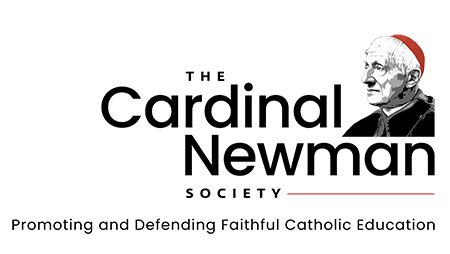
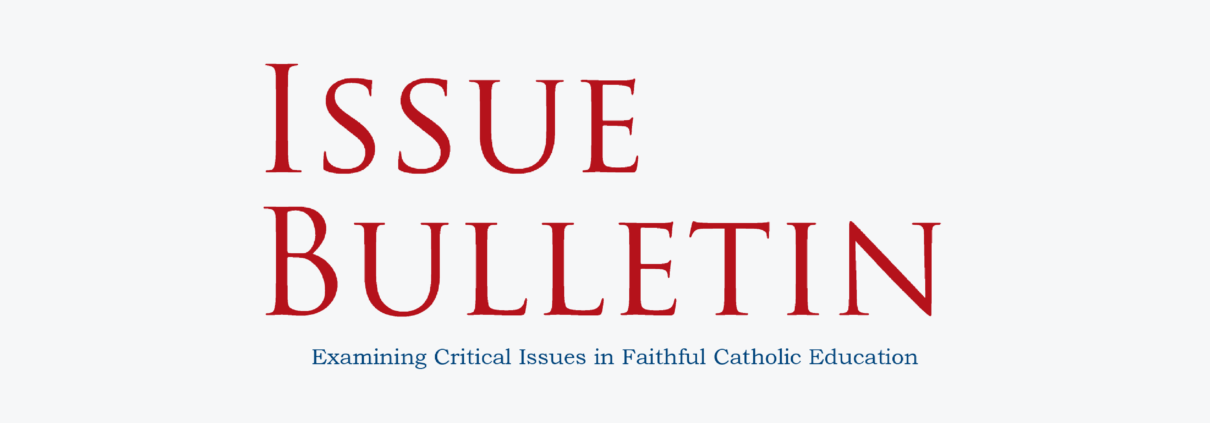
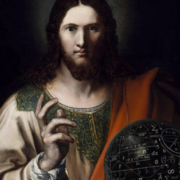
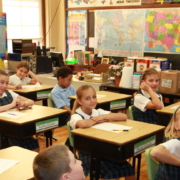 St. Agnes School, St. Paul, MN
St. Agnes School, St. Paul, MN